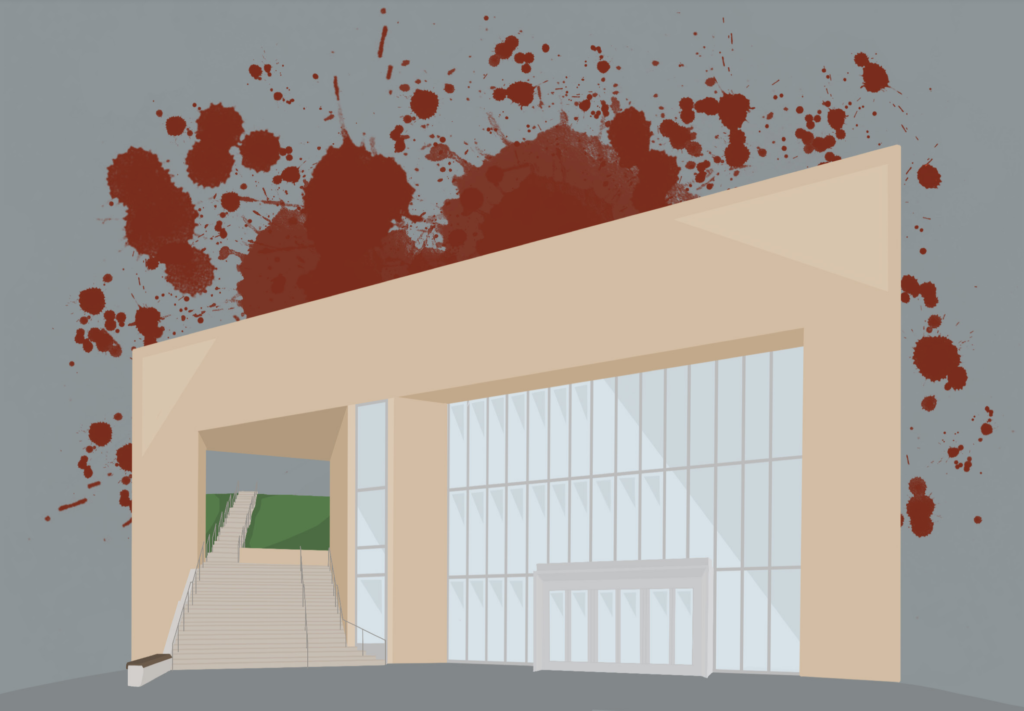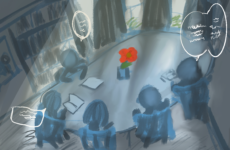
Graphic by Yujin Kim/The Choate News
As an elite, college preparatory school, Choate is expected to prepare students for future studies in college and beyond. This intent, however, isn’t always realized. For example, in the Math Department, a disproportionate amount of students require extensive extra help and/or tutoring to keep up with the curriculum. Ideally, students should be able to succeed with minimal amounts of outside help.
In order to adequately support math students, teams of students in the Peer Tutoring program and the Math Center volunteer to aid their struggling peers. In the Math Center, I’ve spent over 30 hours tutoring, working with students in math classes ranging from Geometry to Multivariable Calculus. I’ve noticed a pattern in students’ math habits: they struggle to apply previous knowledge and instead prioritize memorization over understanding.
This first shortcoming greatly impedes students’ ability to learn. Math is a constructive field of study — in order to learn and fully understand mathematics, students need to be able to take the previous knowledge in their “mathematical toolbox” and apply that to new situations. Essentially, students must develop critical thinking and creative problem solving skills.
Yet, Choate’s math courses speed through new material rather than allowing students the time to foster these skills. As a math tutor, I’ve noticed that some of Choate’s precalculus classes teach the Law of Sines and Cosines without a proof of these laws. Some classes also teach trigonometric identities and complex numbers without tying the two together. This format teaches new knowledge by ingraining formulas into students’ minds through dozens of homework assignments and tests, yet these concepts are never entirely understood and, therefore, inevitably forgotten. Students focus solely on memorizing formulas just to get through the next assessment without ever reviewing old material.
Think about memorizing song lyrics: the words are hard to learn without the music, but the song itself, with the music and melody, is quite easy to memorize. Why? The music offers a structure for the lyrics. Likewise, Choate’s math system needs to create this melody (structure), so the lyrics (formulas) can be attached and linked. However, the facilitation of these connections is often neglected, so students are left to make them on their own — or not at all.
Still, the face-paced nature of Choate life makes it difficult for the Math Department to foster critical and creative thinking. Between extracurriculars, heavy class loads, and club commitments, students are hard-pressed to find time for homework. Once one assignment is done, students immediately move onto the next without spending time ruminating and connecting new knowledge to previous knowledge. Unfortunately, this fast-paced life impacts teachers as well, as they balance teaching four to five classes, extra help, sports, and dorm life — while trying to get through a packed curriculum.
In short, the Math Department struggles because teachers and students are both overburdened. Still, the program could help students draw connections across their body of mathematical knowledge by incorporating proofs into classwork or homework and by substituting tests with problem sets.
Consider proofs. First taught in geometry, proofs serve as a logical method of showing that a statement is true. Proofs build on known knowledge to achieve an unknown result, thus connecting the two and creating a foundation that makes new knowledge easier to learn. Admittedly, writing a proof is challenging, but by using one’s “mathematical toolbox,” it is doable and helps students practice discovering connections on their own.
My second suggestion, problem sets, has already been implemented in several courses, including those of Mr. Dan Proulx and Dr. Jessica Pfeil. These problem sets are designed to challenge students to apply their knowledge in a new and unexpected situation, similarly building problem-solving and critical-thinking skills.
I know that the teachers at Choate are fantastic and are trying their best under the constraints of our current education system — and that my proposed solutions are challenging to implement and require extra time and energy on teachers’ ends. Still, I hope that between the Math Department’s teachers and student tutors, we can work toward building a math program that encourages imaginative and critical thinking — that encourages students to enjoy the whole song, not just a list of soon-to-be-forgotten song lyrics.




